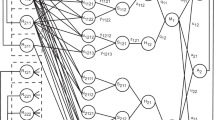Abstract
Line balancing of a printed circuit board (PCB) assembly line is considered in the present paper. The production line consists of a number of machines for inserting electronic components on bare PCBs. The aim is to distribute the assembly operations of a single PCB type to the different machines in such a way that the throughput (i.e., the number of finished PCBs per time unit) of the line is maximized. We suppose that the total time for placements is a linear function of the number of component insertions performed by a machine. Effective mathematical formulations of the balancing problem are then available but previous models omit several aspects having an effect on the actual placement times. In particular, we extend an existing MILP formulation of the problem to consider the usage of feeder modules, precedence constraints among the placement operations, and duplication of frequently used components in several machines. We consider production lines consisting of several gantry-type placement machines. Unlike previous research, we applied standard optimization tools for solving the balancing problems. We then observed that the CPLEX-software was able to solve MILP formulations of 2- and 3-machine problems with up to 150 different component types and relatively large number of component placements (from 400 to 6,000). On the other hand, the running time was rather unstable so that heuristics are still needed for cases where exact methods fail.
Similar content being viewed by others
References
Van Laarhoven PJM, Zijm WHM (1993) Production preparation and numerical control in PCB Assembly. Int J Flex Manuf Syst 5:187–207
Ayob M, Cowling P, Kendall G (2002) Optimisation for surface mount placement machines. IEEE Int Conf Ind Technol 1:498–503
Saygin C, Kilic SE (1999) Integrating flexible process plans with scheduling in flexible manufacturing systems. Int J Adv Manuf Technol 15(4):268–280
Crama Y, Flippo OE, van de Klundert J, Spieksma FCR (1997) The assembly of printed circuit boards: a case with multiple machines and multiple board types. Eur J Oper Res 98:457–472
Ball MO, Magazine MJ (1988) Sequencing of insertions in printed circuit board assembly. Oper Res 36(2):192–201
Leipälä T, Nevalainen OS (1989) Optimization of the movements of a component placement machine. Eur J Oper Res 38:167–177
Smed J, Johnsson M, Puranen M, Leipälä T, Nevalainen OS (1999) Job grouping in surface mounted component printing. Robot Comput-Integr Manuf 15(1):39–49
Rogers P, Warrington R (2004) Production planning for surface mount technology lines. Int J Prod Res 42:2693–2718
Wan YF, Ji P (2001) A tabu search heuristic for the component assignment problem in PCB assembly. Assem Autom 21:236–240
Sze MT, Ji P, Lee W (2001) Modeling the component assignment problem in PCB assembly. Assem Autom 20:55–60
Neammanee P, Randhawa SU (2003) Integrated methodology for board assignment and component allocation in printed circuit board assembly. Int J Prod Res 41:919–937
Depuy GW, Savelsbergh MWP, Ammons JC, McGinnis LF (2001) An integer programming heuristic for component allocation in printed circuit card assembly systems. J Heur 7:351–369
Ammons JC, Carlyle M, Cranmer L, Depuy G, Ellis K, McGinnis LF, Tovey CA, Xu H (1997) Component allocation to balance workload in printed circuit card assembly systems. IEEE Trans 29:265–275
Laakso T, Johnsson M, Johtela T, Smed J, Nevalainen OS (2002) Estimating the production times in PCB assembly. J Electron Manuf 11(2):161–170
Kodek DM, Krisper M (2004) Optimal algorithm for minimizing production cycle time of a printed circuit board assembly line. Int J Prod Res 23:5031–5048
ILOG CPLEX 10.0 User’s Manual, www.lix.polytechnique.fr/∼liberti/teaching/xct/cplex/usrcplex.pdf
Siemens AG (2007) SIPLACE Pro, Url: http://ea.automation.siemens.com, 25.6
Valor trilogy, http://www.valor.com/en/Products/CAM-Assembly (Trilogy).aspx. 23.12.2009
Ashish Sen, Muni Srivastava (1994) Regression analysis theory, methods and applications. Springer-Verlag
Bishop CM (1995) Neural network for pattern recognition. Oxford University Press, USA
Vainio F, Maier M, Knuutila T, Alhoniemi E, Johnsson M, Nevalainen OS (2009) Estimating printed circuit board assembly times using neural networks. Int J Prod Res. doi:10.1080/00207540802572574
Reeves C (1995) Modern heuristic techniques for combinatorial problems. McGraw-Hill Book Company, Europe
Maier M, Knuutila T, Alhoniemi E, Johnsson M, Nevalainen OS (2008) Workload balancing in printed circuit board assembly using placement time estimation. Technical Report. 866, TUCS
Chan FTS, Chan HK (2001) Dynamic scheduling for a flexible manufacturing system—the pre-emptive approach. Int J Adv Manuf Technol 17(10):760–768
Rajakumar S, Arunachalam VP, Selladurai V (2004) Workload balancing strategies in parallel machine scheduling. Int J Adv Manuf Technol 23(5–6):366–374
Rajakumar S, Arunachalam VP, Selladurai V (2006) Workload balancing in parallel machines through genetic algorithm. Int J Adv Manuf Technol 33(11–12):1212–1221
Jiao J, Kumar A, Martin W (2006) A web-based interactive advisor for assembly line balancing. Int J Adv Manuf Technol 27(11–12):1192–1201
Stecke KE (1983) Formulation and solution of nonlinear integer production planning problems for flexible manufacturing systems. Manag Sci 29(2):273–288
Jang SY, Park J, Park N (1996) An integrated decision support system for FMS production planning and scheduling problems. Int J Adv Manuf Technol 11(2):101110
Author information
Authors and Affiliations
Corresponding author
Rights and permissions
About this article
Cite this article
Emet, S., Knuutila, T., Alhoniemi, E. et al. Workload balancing in printed circuit board assembly. Int J Adv Manuf Technol 50, 1175–1182 (2010). https://doi.org/10.1007/s00170-010-2558-x
Received:
Accepted:
Published:
Issue Date:
DOI: https://doi.org/10.1007/s00170-010-2558-x




